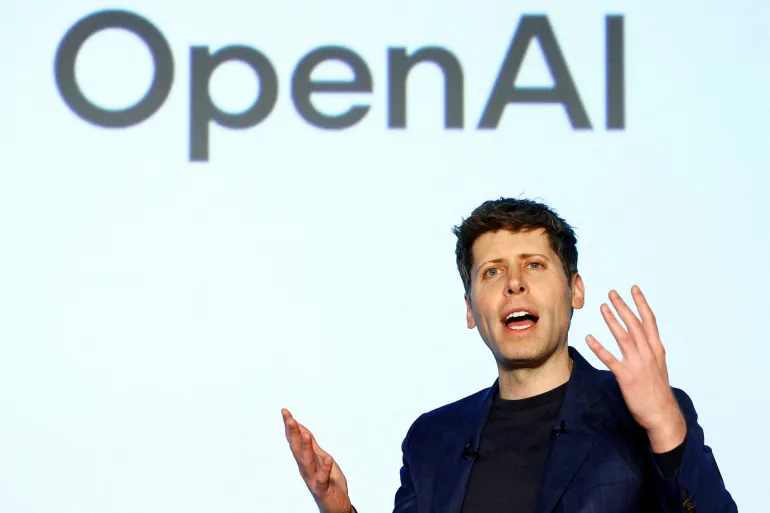A groundbreaking agreement between OpenAI and Amazon Web Services (AWS) has sent a seismic shockwave across the technology industry. The two giants announced a massive, multi-year deal. This partnership is valued at $38$ billion. It ensures that the maker of ChatGPT gains immediate and large-scale access to essential cloud computing infrastructure. This landmark deal is more than a simple transaction. It signifies a pivotal moment in the race for Artificial General Intelligence (AGI). Furthermore, it immediately validates AWS’s position in the AI infrastructure market, consequently allowing OpenAI to diversify its critical compute power away from its traditional primary partner, Microsoft.
A Strategic Pivot: Ending Exclusive Cloud Reliance OpenAI
For years, OpenAI’s growth was inextricably linked to Microsoft. Microsoft became the startup’s largest investor. It also served as its exclusive cloud provider. However, the relationship recently reached a turning point.
- The Restructuring: OpenAI successfully completed a corporate restructuring. This move granted the company greater operational and financial freedom. Crucially, it removed Microsoft’s right of first refusal to be the sole compute provider. Therefore, the door was opened for diversification. OpenAI wasted no time capitalizing on this new liberty. The company immediately signed this monumental agreement with AWS.
- The Multi-Cloud Future: This shift establishes a multi-cloud strategy for OpenAI. It joins smaller agreements already in place with Google Cloud and Oracle. OpenAI CEO Sam Altman emphasized the necessity of this approach. He stated that “Scaling frontier AI requires massive, reliable compute.” Altman believes that the partnership with AWS “strengthens the broad compute ecosystem” needed for the next era of AI. This strategic realignment is critical for mitigating risk. It ensures the company avoids reliance on any single technology partner.
The Insatiable Appetite for Compute OpenAI
The sheer size of the $38$ billion agreement underscores a fundamental truth about the AI industry. The pursuit of advanced AI requires an insatiable, unprecedented appetite for computing power.
- GPU Access: The core of the deal grants OpenAI access to “hundreds of thousands” of NVIDIA GPUs through AWS infrastructure. These Graphics Processing Units are the essential engine for AI development. AWS will deploy state-of-the-art chips, including NVIDIA’s advanced GB$200$ and GB$300$ accelerators. These chips are necessary for two main functions: training OpenAI’s next wave of frontier models and powering the real-time responses for consumer applications like ChatGPT.
- Massive Infrastructure Investment: The deployment is set to begin immediately. All planned capacity is targeted to be fully operational before the end of $2026$. Furthermore, the seven-year deal includes provisions for further expansion in $2027$ and beyond. This partnership aligns with Sam Altman’s publicly stated ambition. He is committed to spending an estimated $1.4$ trillion to develop $30$ gigawatts of computing resources. This ambitious infrastructure goal is equivalent to powering millions of US homes. It clearly shows the scale of the company’s long-term vision.
Market Reaction and AWS Validation
The announcement triggered a strong positive reaction in the stock market. This reaction immediately validated AWS’s position in the competitive cloud market.
- Amazon’s Surge: Amazon shares jumped $5\%$ following the news. This gain added nearly $140$ billion to the company’s market value. The deal reassures investors who feared that AWS had been falling behind rivals like Microsoft and Google in securing major generative AI workloads. AWS CEO Matt Garman noted that the agreement “demonstrates why AWS is uniquely positioned to support OpenAI’s demanding AI workloads.”
- Microsoft’s Status: Conversely, Microsoft shares briefly dipped on the news. However, Microsoft remains OpenAI’s largest investor. It also retains a massive, ongoing cloud commitment from the startup. The new AWS deal simply changes the dynamic. It positions Microsoft as a strategic partner, not an exclusive backbone. This shift is a sign of the market’s maturity. AI providers now seek diversified compute sourcing to mitigate vendor lock-in.
Implications for the Future of AI and Cloud Computing
The OpenAI-AWS alliance has profound implications for the global technology ecosystem.
- The Compute Supply Chain: The agreement underscores that AI infrastructure—including GPUs and specialized networking—is now a constrained global commodity. This scarcity forces providers to lock in long-term contracts. These contracts mirror procurement models traditionally seen in the energy or manufacturing sectors.
- Multi-Cloud Maturation: The strategic move toward multiple cloud providers reflects a broader trend. It signals that the AI ecosystem is maturing. It embraces diversified sourcing to reduce single-supplier risk. This competition between hyperscalers promises to drive faster innovation in distributed computing. It may also lead to better performance and lower latency for AI applications across the board.
- Business Model Questions: Despite the massive spending, questions persist about the long-term economics. OpenAI has committed to unprecedented infrastructure spending. This spending is based on the expectation of exponential revenue growth. Some analysts fear that the AI boom could be inflating into a bubble. However, OpenAI executives insist that revenue is growing steeply. They are taking a forward bet on continued, rapid market expansion. The massive deal is seen as a down payment on a revolutionary, AI-powered future.
In conclusion, the $38$ billion agreement between OpenAI and Amazon is a defining moment for the AI industry. This secures the necessary computing power for OpenAI’s next generation of models. It fundamentally reshapes the cloud landscape. It confirms that the future of frontier AI will rely on a decentralized, multi-cloud infrastructure. OpenAI
Read More Articles Click Here. Read Previous Article Click Here.

